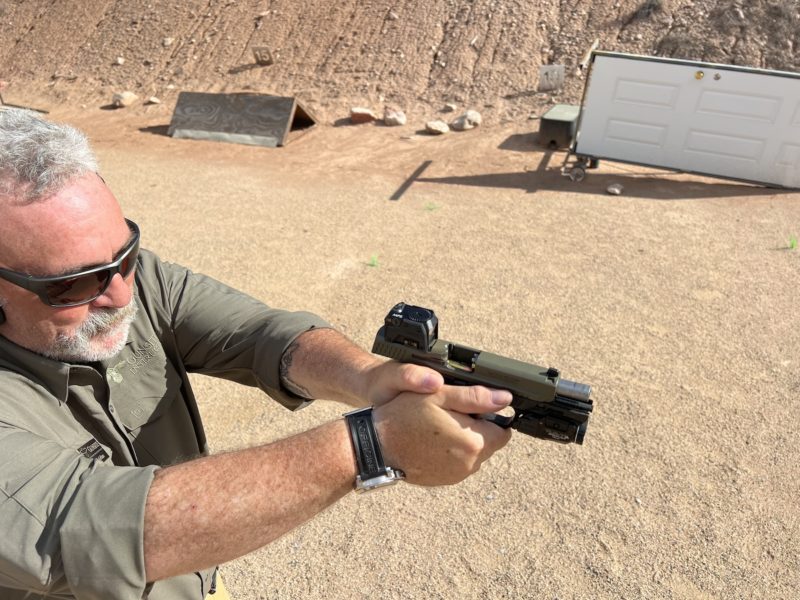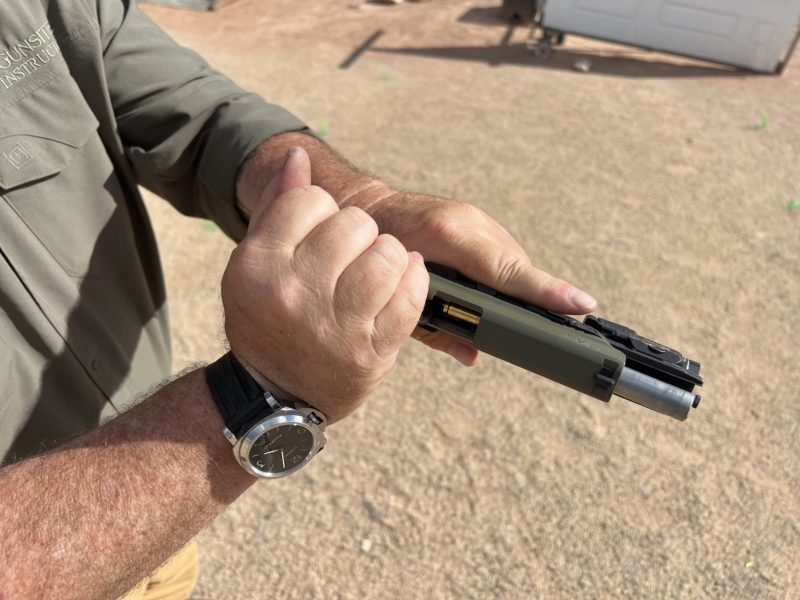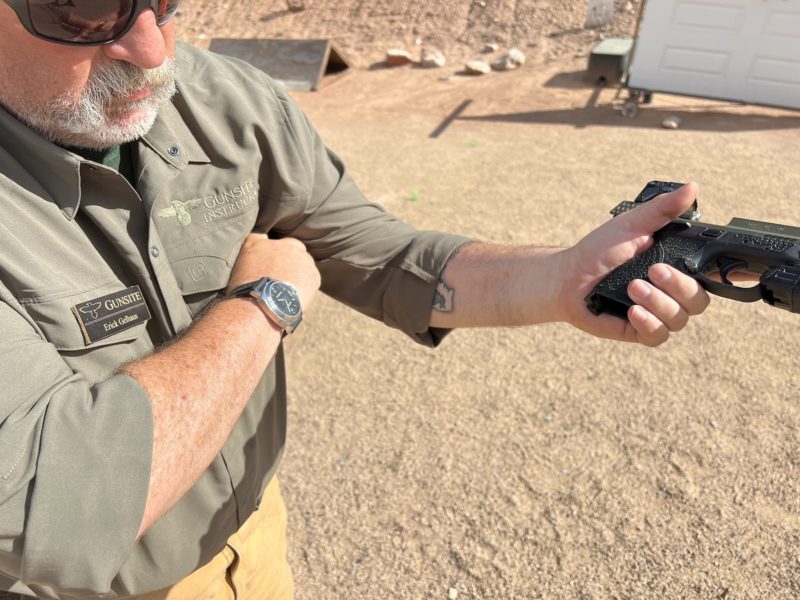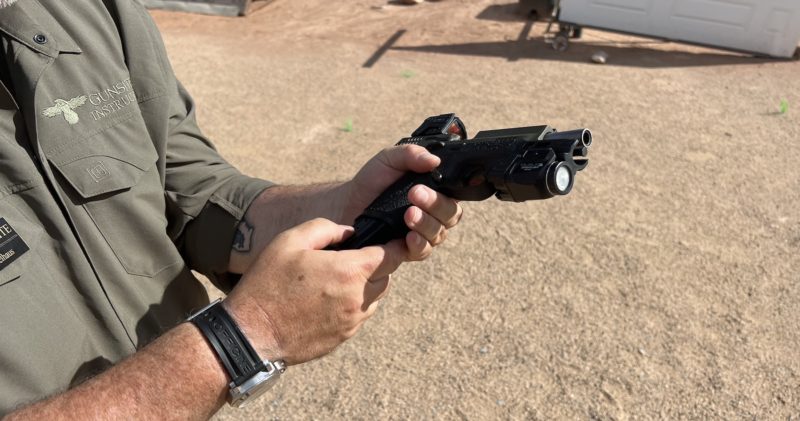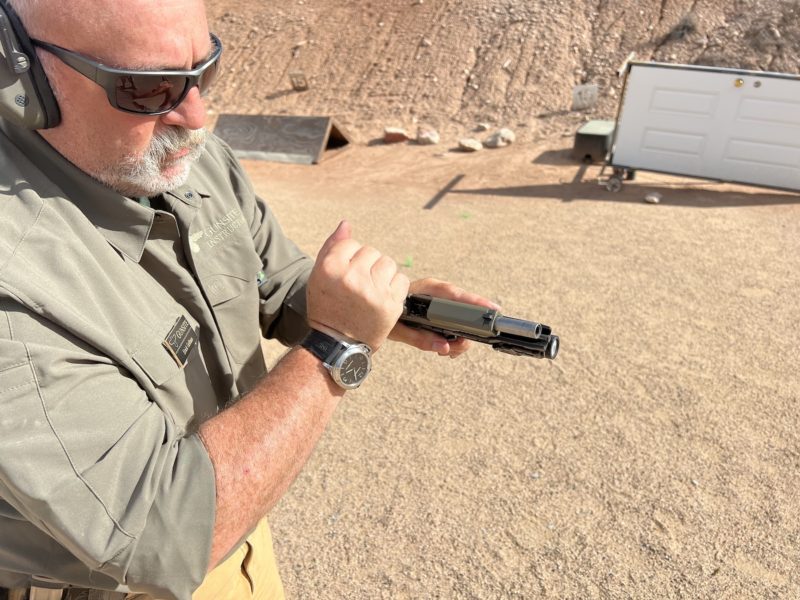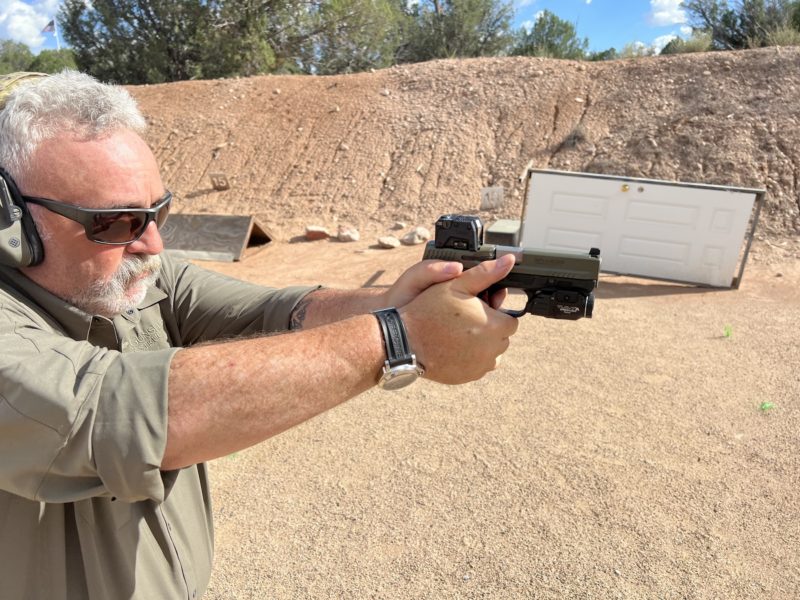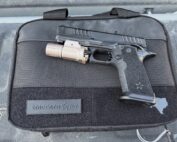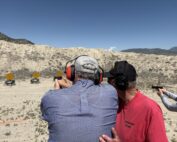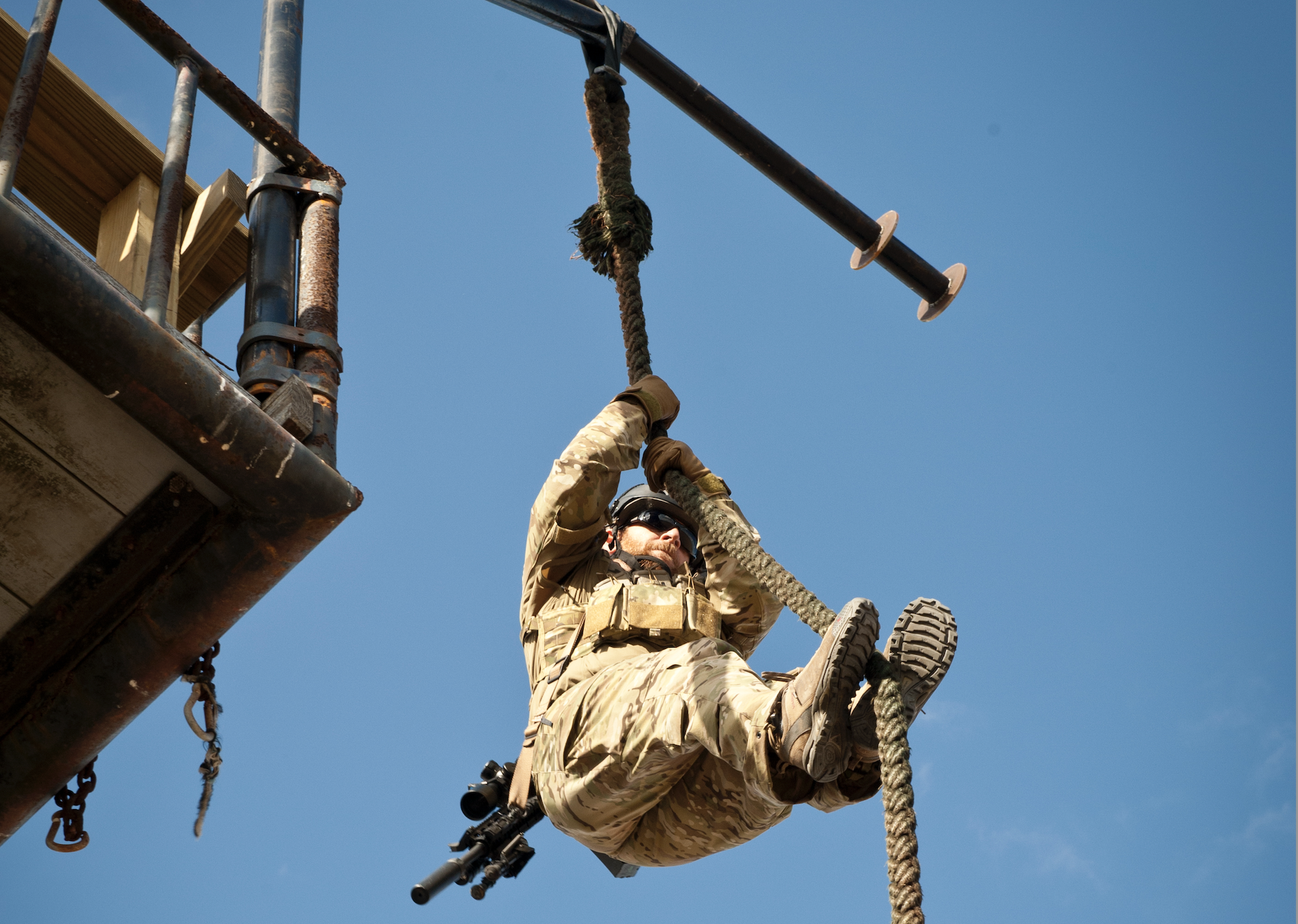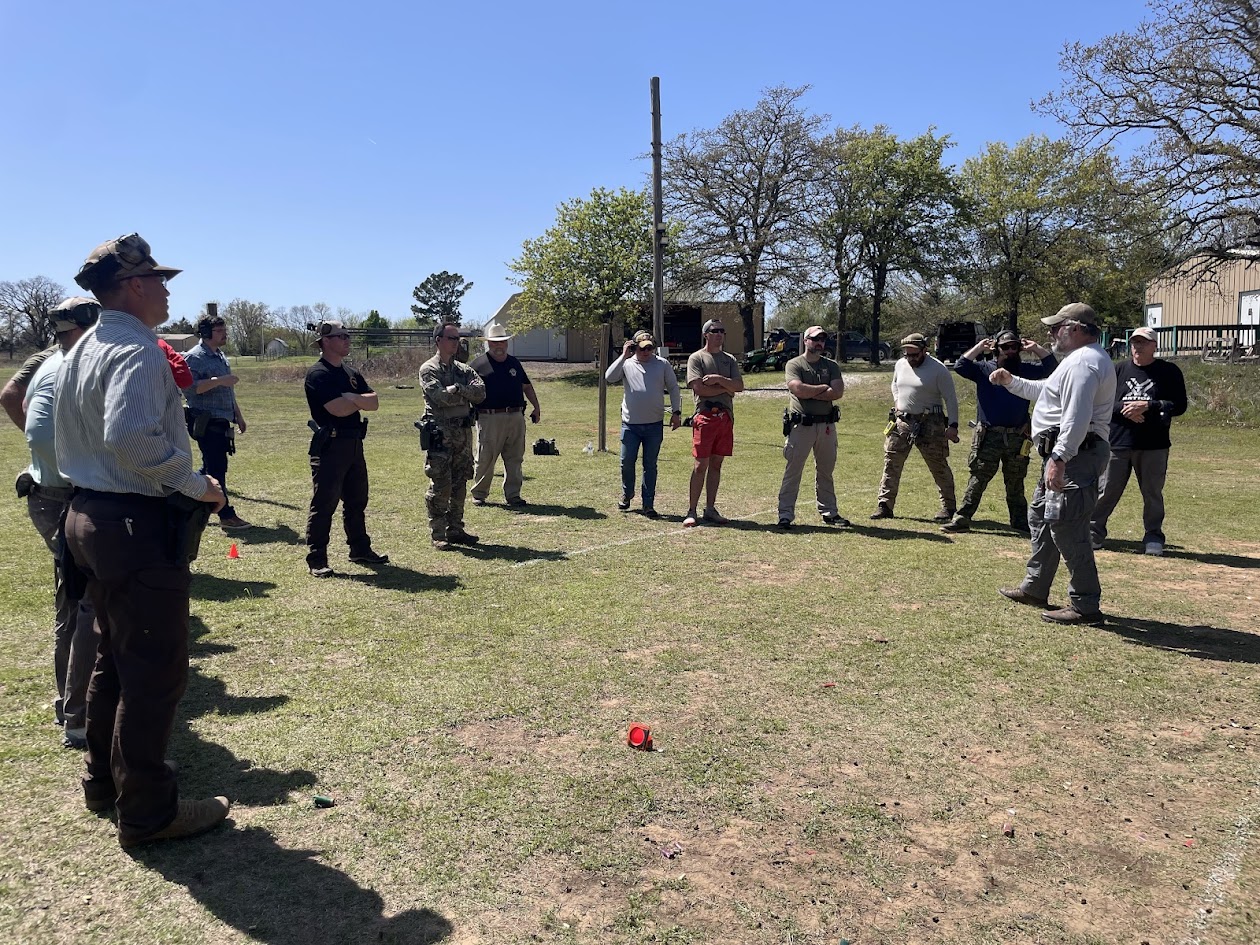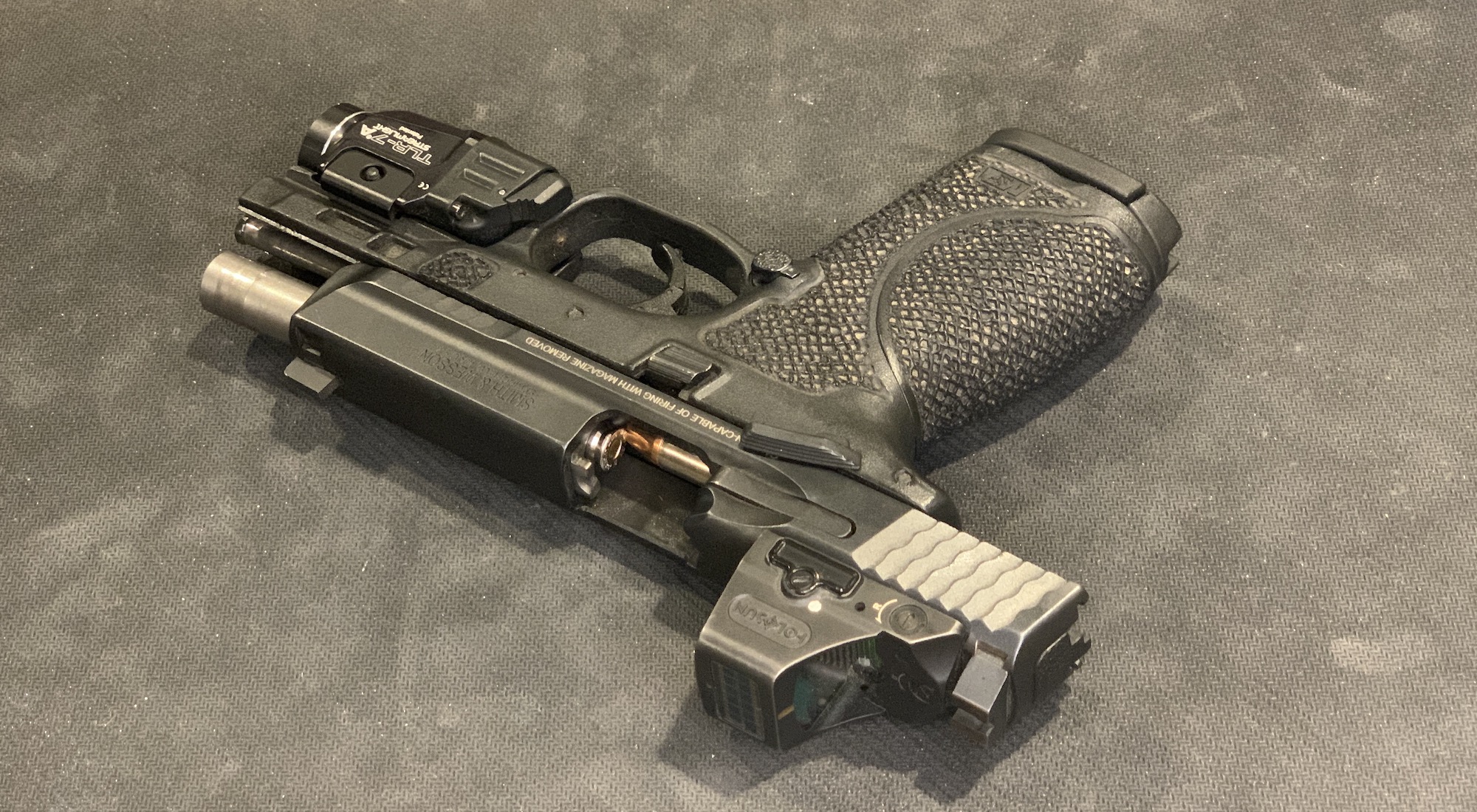
cover_9375
Tap, roll, rack, and assess should – I emphasize should – clear many of the stoppages you are likely to have with a quality semi-auto pistol. What happens when that technique does not work?
What part of the eight-step function cycle for a semi-auto pistol (or rifle, or shotgun) have things failed? The error happened during the Extract phase. Rather than being what is often called a double feed, it is a Failure to Extract.
For whatever reason, the extractor – the hook-shaped piece next to the bolt face – did not work as designed. That piece of the gun either slipped off the case rim, ripped through the rim, or the extractor itself broke. Over the years, I have experienced all three. The last two are catastrophic failures; you will not be able to clear them without tools. And you may not be able to identify that issue early on.
Before we venture into clearing the stoppage, this is a plug for carrying a backup gun (or BUG). While that backup gun may not be the fastest draw, it is surer that you will get a working gun back into the fight. Carry one, practice with it – especially if you are an active cop.
With the proliferation of body-worn camera videos and their release to the public after law enforcement shootings, if you have watched them, you are starting to see a significant amount of stoppages with officers’ handguns. Why and When are these happening? I hypothesize (essentially guess) that the officer’s grip drives it. It appears that the issue is whether the grip on the pistol was planned and initiated by the officer’s thought process or was part of the reaction to a sudden threat stimulus. Those sudden, maybe panicked, draws often seem to be involved in the stoppages.
As mentioned at the start of this article, Tap the magazine first. Then Roll the ejection port downward while you Rack the slide to the rear. After releasing it, allowing it to slam forward, assess the situation and re-engage the threat as needed.
You will find confirmation of the Failure to Extract when that slide does not go completely forward. You will not feel the weight go all the way forward. Then what?
There are two ways to clear this, one works on any common semi-auto handgun, and I will cover it first. The other has some parameters.
With every semi-auto pistol, start by locking the slide to the rear. Doing this takes the pressure off the top round, which is trying to go into the occupied chamber. After locking the slide to the rear, depress the magazine release, and pull the magazine out of the pistol. If you do not know whether you have more magazines available, retain the magazine. Putting it in your shooting arm’s armpit is a way to do that.
Next, grab the back of the slide, pull it rearward to the end of its travel, and let it slam forward. Just let it slam forward. Please do not ride it back and forth like a sewing machine. The extractor claw is designed so the cartridge’s rim slides underneath it when fed into the chamber. Slamming the slide forward asks the extractor to work in a way it was not designed to do. Pull the slide to the rear again and let it go forward. Then repeat it a third time.
If three tries do not work, you may be unable to fix the extraction failure without tools.
If it did work, find a new magazine once you have cleared the chamber. If one is there, great, reload the pistol with it. Then, as you present the working pistol, the partial magazine in your armpit call fall free. If you do not have another magazine, use the one you removed from the handgun. Seat it, run the slide to chamber a round, and re-assess the event.
What about the other method? Well, I often hear it called the Glock clearance. After trying Tap, Roll& Rack without success:
1. Unload the pistol by ripping the magazine out.
2. Re-insert the magazine into the pistol.
3. Seat the magazine, and then run the slide. You will extract and eject the round in the chamber before feeding a new round.
The second technique, which can take less time, works on pistols (like Glocks) that have more flex in the polymer frame, and the top round has minimal protrusion from the magazine. However, you need to check this with your carry, defensive, or duty pistols to ensure it works with those firearms. While the Glock clearance works on several of my polymer-framed pistols, there are two it does not work with – an STI Staccato P and one M&P Compact. The issue for the Staccato is how far out the top round protrudes, while the extractor on the Compact will not go over a case rim. I will get that pistol to my regular gunsmith to address the issue.
Whatever you choose to use, work those skills into your practice sessions. Regularly work on those skills so that they are accessible and usable when you need them.


 (No Ratings Yet)
(No Ratings Yet)